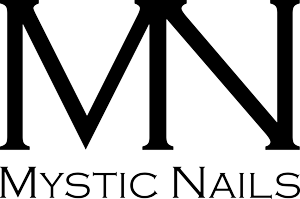TPO in gel polish causes testicular atrophy!
TPO used in gels/gel polishes causes testicular atrophy!
Strong start with the title above, isn't it?
Believe me, it's not clickbait and the title wasn’t designed just to get attention.
It's true: the TPO ingredient used in UV light-curing nail gels and gel polishes is the one that specifically causes testicular atrophy (at least according to the SCCS.)
You might rightly wonder how many nail technicians or clients feel at risk from this, but let's not get ahead of ourselves, trust me, it's worth reading through.
Now, let's quickly sort out what a TPO is and who SCCS is.
I'm sure you've come across some "free" claims in marketing or product descriptions of countless nail brands, such as HEMA-free and some other harmful substance-free products, including TPO-free products. (By the way, have you already read my blog post about the HEMA-free marketing hype? If not, you can catch up by clicking here!)
However, I'm guessing that there's a good chance that the majority of nail technicians don't know what TPO is, and definitely don't know why this ingredient is harmful, so I thought it might be worthwhile to get this right, as well as on HEMA.
What is TPO?
TPO is a photoinitiator, it’s an ingredient whose main function is to cure (polymerize) nail gel and gel polish under UV/LED light. Besides TPO, there are other photoinitiators, which I will talk about in my video about HEMA-free products here, but let's stick to TPO for now, as this blog article is all about it.
The reason why the ingredient TPO (2,4,6-Trimethylbenzoyl-diphenyl phosphine oxide) is used by nail material manufacturers in their gels and gel polishes is because - let's put it this way - it makes the gel (gel polish) UV/LED lamp safe. What does this mean? A few years ago, when LED and UV/LED lamps came on the market, it was not because the lamp manufacturers (from China) first consulted the nail base material manufacturers on what to develop, but because they came up with an "innovation", a new lamp that was more energy efficient and longer lasting. It's great, but they haven't really tested whether the gels and gel polishes really cure properly in these lamps. So the product development had to follow this up on the raw material side, in order to ensure that the products no longer just work perfectly in a UV lamp, but also in an LED or combined UV/LED lamp. TPO proved to be the most suitable ingredient for this.
But what's wrong with TPO?
For those of you who have read my blog article revealing the HEMA-free marketing bullshit, the term SCCS, which stands for Scientific Committee on Consumer Safety, will sound familiar. It's an EU committee, which develops opinions on the health and safety risks of non-food consumer products (e.g. cosmetics and their ingredients, personal care and household products) and services (e.g. tattooing, tanning beds). And in a study on TPO, conducted about 10 years ago, they found that, in their opinion, the presence of this ingredient in cosmetic products is likely to impair fertility in users.
Let’s admit it, that does sound pretty bad. But I suggest not burying TPO just yet; at least not right away, and read on.
In any case, following the SCCS opinion and proposal, the European Union Commission in its Regulation (EU) No 618/2012 has declared the hazard classification of the TPO ingredient as H361f, which stands for "may damage fertility."
As a result, the Commission has ordered that TPO will be banned in any cosmetic product after 1 December 2013.
Yes, but there was a little problem.
Namely that the classification "probably harmful to fertility" was not for females, but only for males in the study. And behind this general warning and hazard classification was the more specific wording of the SCCS, which reads literally: causes testicular atrophy.
Well, that was the moment when the nail material companies petitioned the SCCS committee saying, “we understand this TPO thing, that it causes testicular atrophy, but given that:
A) artificial nail cosmetics are not typically used by and on males, and
B) the absorption of any ingredients through the nail surface is questionable anyway,
C) in addition, the proportion of TPO in the final product is extremely low,
we would ask the SCCS Committee to review this opinion specifically in the case of nail building products and to make a supplementary proposal accordingly if it considers that these products could be an exception from a risk point of view.”
To the credit of the SCCS, it anticipated our request and concluded in a 31-page study published on 27 March 2014 that nail products (cosmetics) could indeed be exempted from the alleged fertility risk of TPO, i.e. testicular atrophy. Of course, it did not exempt the nail industry from the whole regulation, but it did say that the proportion of TPO in the final product should not exceed 5%. This is a funny because normally the proportion of TPO (or any other photocuring agent) in the final product is about only 1%.
To sum up:
Much ado about nothing so far, but the story doesn't end there.
When I said so far, I was referring to a certain date, because on 19 October 2023, the Commission reclassified the previously mentioned H361f classification and no longer applied the classification to males only, but to both sexes and generally assigned the warning "May damage fertility."
Now, that doesn't sound very good at all. I might add that I have not yet found the SCCS study on which the reclassification is based, and I have searched in vain (although I know where to look). Therefore, I strongly suspect that this reclassification is a simplification and rationalization by the legislature, based largely on the fact that they saw in the previous classification only the fact that TPO is "Possibly harmful to fertility". The parenthetical part about it causing testicular atrophy, however, was no longer considered in the SCCS study, so just like that, they extended the fertility risk to females. I would like to stress that the latter statement is my own private opinion and assumption (which, by the way, is in line with the opinion of other chemical engineers in the nail industry), which has no official basis in any tangible evidence! In any case, this is my personal impression, given that the SCCS study on which the reclassification is based is still obscure as to where it is to be found, if it exists at all.
But the point is, of course, that we will not give space to subjective assumptions and we accept the position of the legislature, which is that since 19 October 2023 (i.e. 7 months before this blog article was written), TPO can harm fertility, which is a risk that no longer affects only males.
In addition, this regulation also mandates the complete removal of TPO from all cosmetics by 1 September 2025. Still, I have the feeling, given TPO's history, it’s uncertain whether artificial nail products might once again be exempt. We will see. In any case, let's accept that this is the status quo for now.
"Now the relevant question is whether or not the product has TPO in it?"
You may quite rightly ask the above question after reading all this background information. Well, allow me to answer this question with reference to the legislation on TPO, because I am afraid that is the only straight answer I can give:
- 1 December 2013 - 26 March 2014 was irrelevant because it was banned, so all products had to be TPO-free (in principle)
- Between March 27, 2014 - October 18, 2023 it was relevant, but only males who wore artificial nails were at risk of testicular cancer, although not them either, as the ingredient content in the final product was below 5%.
- 19 October 2023 - 31 August 2025 is a relevant issue as the risk classification has been extended to females (although obviously not causing testicular atrophy) but TPO can still be used in cosmetics
- after 1 September 2025, it will again become a theoretically irrelevant issue, as TPO will be banned as an ingredient by then (unless there is again a specific SCCS resolution on this by then)
Not easy, is it? Tell me about it!
In any case, I hope that this blog post has at least given you a deeper insight into the topic and that you have a better understanding of the essence and potential risks of TPO as an ingredient.
One more important thing!
Just for the sake of clarity, and along the lines of HEMA-free marketing hoax, I would like to point out here that TPO-free is only and exclusively for products that are to be cured in UV or LED lamps. So to claim that a cleanser or disinfectant or primer...etc. is TPO-free is total bullshit, because there is no reason for TPO to be in the product in the first place. It never was. Regardless, there are plenty of examples of such information from other brands that you will now know how to evaluate.
I add that most brands don't state the TPO-free feature for products that don't cure in UV/LED lamps because they want to mislead customers and just want to use sneaky marketing tools to make their product more desirable. I am convinced that this is not the case. Rather, they have no idea what TPO is and what they need to know about it.
If you are interested in this topic, watch the video below, where I will tell you what you need to know about TPO.
P.S. You may recall that I mentioned that part of the argument in the petition to the SCCS was the question of what and to what extent the ingredients in the gel and gel polish used and cured (polymerized) on natural nails can be absorbed at all. Well, I'll be back with a blog post on this soon so I suggest you subscribe to our newsletter here if you don't want to miss out on this very important content!
Best regards,
Laci Gyimesi
CEO of Mystic Nails





